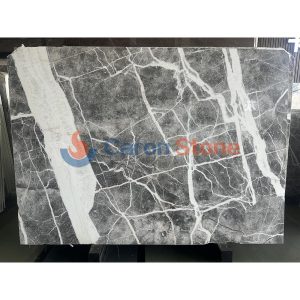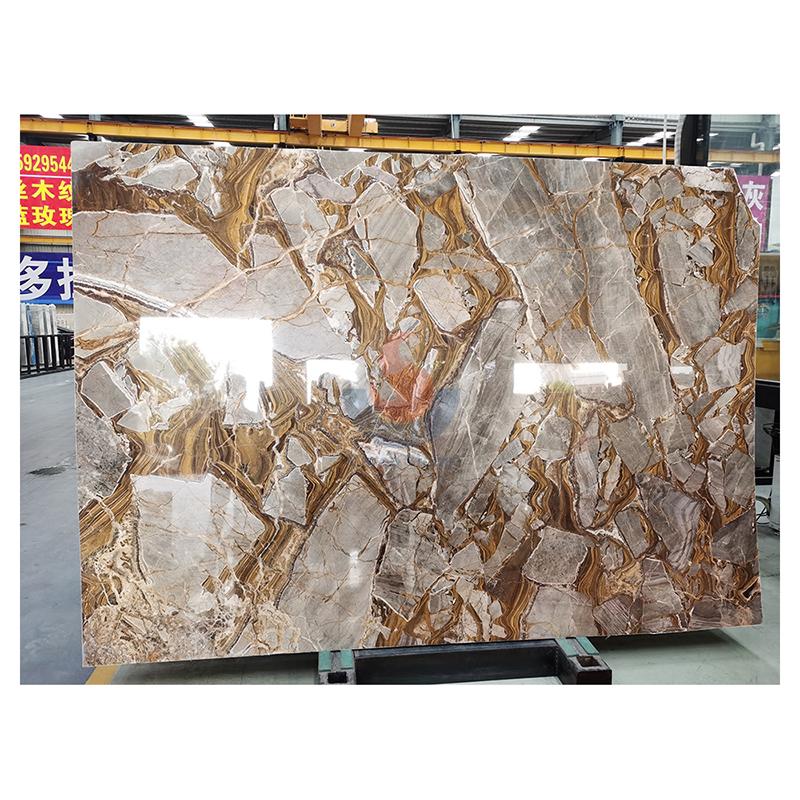Marble is formed by long-term accumulation and geological changes of natural minerals, so it is a natural non-renewable resource. Many people face a choice when choosing marble. Should they choose artificial marble or natural marble? How to choose after arriving at the stone city to ensure that they will not be cheated by merchants?

Chinese Marble Carso Grey Skyfall
What are the advantages of marble
As a natural stone, the advantages of marble are self-evident. First of all, it has excellent high and low temperature resistance and will not deform even at extreme temperatures. Secondly, marble is known for its high gloss, high hardness and unique texture. Each piece of marble is a unique work of art. In addition, after testing by authoritative organizations, the radiation level of natural marble is even lower than that of wood, ensuring safety during use. Marble has a wide variety of varieties and rich colors, providing customers with a wide range of choices and meeting the needs of different decorative styles.
Characteristics of marble
1. Good decorative performance, the texture and color of marble are natural, and it is widely used in indoor walls and floors.
2. No deformation, the rock has been naturally formed for a long time, the organizational structure is uniform, the expansion coefficient is extremely small, and the internal stress disappears completely.
3. Good rigidity and strong wear resistance.
Marble brand
Because of its non-standard customization, marble does not have any household brand. Marble is known to the public by its origin and variety. Such as origin (Italy, Turkey, Iran), variety (fish belly white, Ultraman, Magnolia), etc.
How to choose marble
1. Choose mature varieties in the market, with more choices, strong comparability, and many reference cases.
2. The higher the glossiness of the glossy surface, the better the mirror effect. The matte surface has a stronger texture and the effect is warmer and softer.
3. Choose the thickness of marble. Marble is usually between 1.4 and 1.8 cm thick. Because marble can be renovated and polished, the thickness will become thinner and thinner due to the number of polishing. The thicker the marble, the longer it will last.
4. Choose marble material. The better the material, the higher the density, hardness and glossiness. The better the durability.
5. Choose a board with as few cracks and cracks as possible, because after use, it is likely to develop lesions from the cracks and cracks.
6. Marble is particularly plastic and can be processed into a variety of shapes, which is incomparable to other decorative materials.
The methods to distinguish the authenticity of marble mainly include the following points:
1. Observe the texture: Each piece of natural marble has its own unique texture and color, which is its most significant feature. If the texture looks too regular or repetitive, it may be fake.
2. Listen to the sound: Gently tap the marble, natural marble will make a crisp sound, while artificial marble will make a dull sound.
3. Light transmittance test: Use a light source to illuminate the back of the marble, and the light transmittance of natural marble is usually better.
4. Drop test: Drop a few drops of dilute hydrochloric acid on the surface of the marble, natural marble will bubble, while artificial marble will bubble weakly or not.
5. Check the mark: The mark of the marble slab should include the name, classification, specification size and grade. By checking the markings, you can get an idea of the overall appearance quality of the board.
6. Observe the appearance quality: Check whether the marble has obvious defects such as cracks, depressions, spots, etc., and pay attention to whether the patterns and colors of the same batch of marble are basically consistent.
7. Be careful when choosing: Do not trust the small samples provided by the merchant, because they may be selected. Go to the warehouse in person to inspect the finished products and check the quality of the spread of the same batch of products.
Through these methods, you can more accurately identify the authenticity of marble and avoid buying inferior or counterfeit products.

Real natural Blue onyx marble stone slab and tile for wall and floor contruction decoration from China
In the process of identifying the authenticity of marble, consumers should use a combination of methods, including observing its unique texture, listening to the sound when knocked, conducting light transmittance tests, using dilute hydrochloric acid for chemical reaction tests, and carefully checking product markings and appearance quality. These methods not only help to ensure the authenticity and quality of the marble purchased, but also avoid unnecessary financial losses. Ultimately, choosing real natural marble will add a natural beauty and lasting value to your home or construction project.





